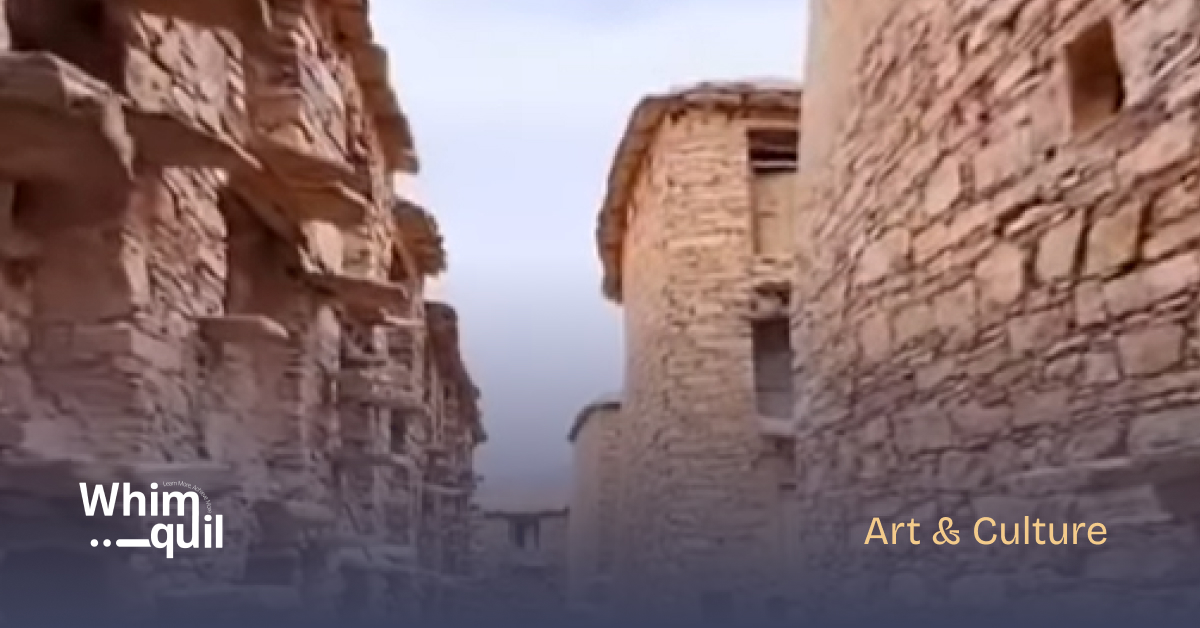Introduction
Did you know that some of the earliest forms of banking can be traced back to ancient granaries in Morocco? The Igudar, ancient Amazigh granaries mainly found around Agadir, are more than just structures of stone and clay; they are living testaments to one of the earliest banking systems in history. These granaries stored essentials like grains, legal documents, and valuables such as jewelry, making them a cornerstone of Amazigh society. Remarkably managed, they served multiple purposes, from food storage to crisis shelters, reflecting the Amazigh’s advanced social organization and resilience.
What is Igudar?
“Igudar” refers to the fortified communal granaries built by the Amazigh (Berber) people of Morocco. Originating as early as the 11th century, these structures were designed to store not only food and valuables but also to safeguard important documents and resources. They became vital community hubs that ensured security and survival in times of conflict and scarcity.
Location of Igudar
Igudar granaries are primarily found around Agadir, a region in southern Morocco known for its diverse landscapes and rich history. However, these unique structures are also scattered across the Anti-Atlas Mountains and other parts of Morocco, serving as historical landmarks of the Amazigh civilization.
Structure and Architecture of Igudar
The Igudar granaries are architectural marvels. Built from local materials such as stone, clay, and wood, these structures were designed to withstand both natural elements and potential attacks. Their multi-story design, featuring thick walls and narrow entrances, was crafted to provide maximum security against intruders.
The Role of Igudar as a Storage Facility
At its core, Igudar functioned as a storage facility for a variety of essentials. Grains like barley and wheat, legal documents like land deeds, and valuables such as jewelry and money were all safeguarded within its fortified walls. This made Igudar indispensable in preserving vital resources for future use, especially during times of hardship.
Management of Igudar
The operation of Igudar was well-organized, managed by a “Lamine,” or secretary, responsible for overseeing daily activities. A committee of tribal representatives, known as the “Inflas,” participated in governance to ensure fair management and equitable resource distribution. This collaborative effort highlights the Amazigh’s strong community values and effective leadership.
Igudar as a Multifunctional Complex
Beyond storage, Igudar served as multifunctional community centers. Some granaries had water reservoirs for drinking water, while others had designated living quarters or mosques. This versatility made Igudar not just a storage site but a central hub for daily life and community activities.
Igudar in Times of Crisis
During wars, famines, or other crises, Igudar became a sanctuary, providing shelter for people and livestock and ensuring safety and sustenance. This adaptability showcases the Amazigh’s foresight in building structures that met a variety of community needs.
Cultural and Social Importance of Igudar
Igudar granaries were more than just storage facilities; they embodied the cultural and social identity of the Amazigh people. As communal structures, they promoted social cohesion and solidarity among tribe members, reflecting the Amazigh’s advanced social organization and emphasis on community welfare.
Economic Significance of Igudar
Beyond their role as storage facilities, Igudar also functioned as early banking systems. The granaries stored surplus goods and valuables, which could be traded or used as collateral for loans, much like modern banks. This dual function helped facilitate trade and commerce within and beyond the community.
Preservation and Modern-Day Significance
Today, many Igudar granaries still stand, though some are in urgent need of restoration. Local communities, historians, and the Moroccan government are working to preserve these structures, recognizing their historical and cultural significance. Restoration projects and awareness campaigns aim to highlight their importance and ensure their survival.
Tourism and Igudar
For those interested in history and culture, Igudar has become a major attraction. Tourists and scholars are drawn to these granaries to learn about the Amazigh way of life. These structures provide invaluable insights into the past, making them essential sites for cultural tourism in Morocco.
Comparisons to Other Ancient Banking Systems
While Igudar shares similarities with other ancient storage systems, such as the granaries of Egypt or Mesopotamia, it stands out due to its multifunctionality and communal management. Unlike other systems focused mainly on storage, Igudar integrated social, economic, and spiritual elements, making it a unique institution.
Challenges and Threats to Igudar
Despite their historical importance, Igudar granaries face numerous challenges today. Environmental factors like erosion and climate change pose significant threats, while neglect and a lack of funding for restoration efforts also jeopardize their future. Preserving these granaries requires continuous commitment and action.
Conclusion
Igudar granaries are more than ancient storage sites; they are pillars of Amazigh culture and history. As early examples of banking and asset management, they showcase the ingenuity and resilience of the Amazigh people. Preserving these structures is crucial for understanding Morocco’s past and appreciating the social and economic advancements of ancient societies.
Follow us here.
watch the video of Igudar.
https://www.instagram.com/reel/C_n2DOfizUm/?utm_source=ig_web_copy_link&igsh=MzRlODBiNWFlZA==
What are Igudar granaries?
Igudar granaries are ancient communal storage facilities built by the Amazigh people of Morocco to store grains, legal documents, valuables, and more.
How were Igudar managed?
Igudar was managed by a “Lamine” (secretary) and a committee of tribe representatives called the “Inflas,” ensuring fair governance and resource distribution.
Why were Igudar important in times of crisis?
They provided shelter, food, and water during crises such as wars and famines, ensuring the community’s survival.
Are there efforts to preserve Igudar today?
Yes, local communities, historians, and the Moroccan government are working to restore and preserve these ancient structures.
What makes Igudar unique compared to other ancient systems?
Igudar is unique due to its multifunctionality, serving as a storage site, community hub, and place of worship, unlike other systems focused solely on storage.


